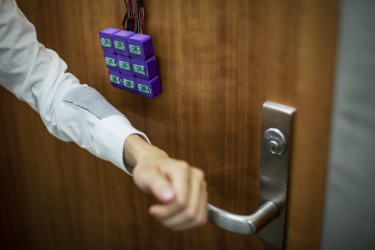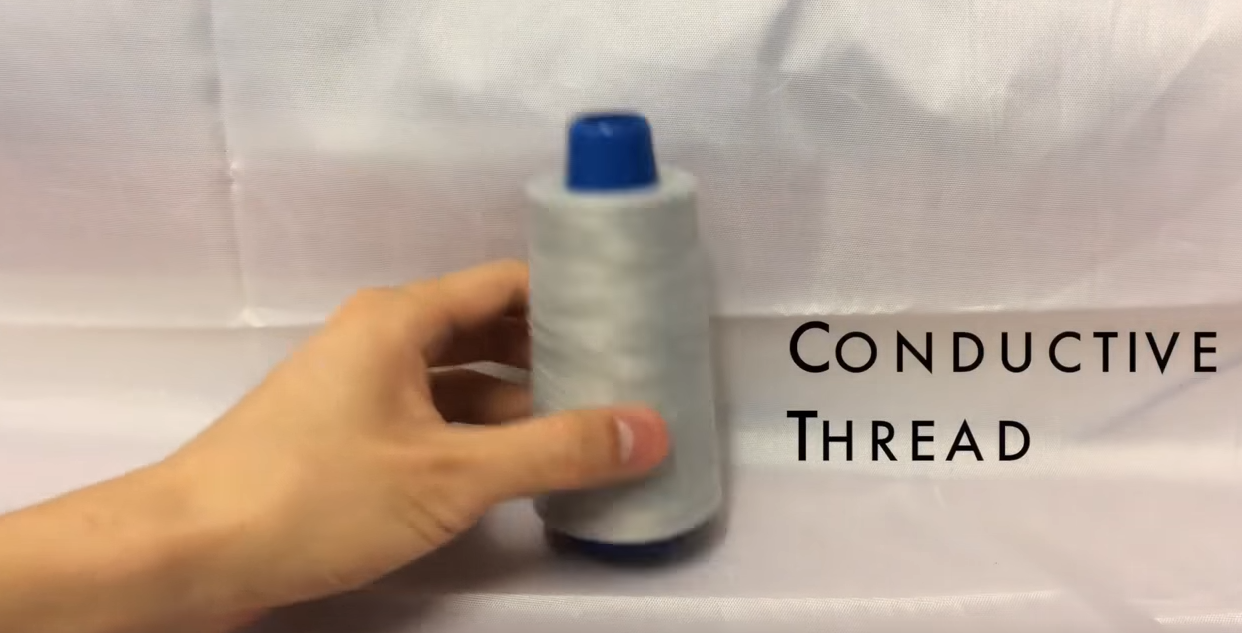By Nicole DiGiose, content editor
Well, here’s one way we know we’re inching closer to a world that once seemed so far off in the future. By using magnetic properties of conductive thread, researchers at the University of Washington have successfully stored data in fabric. Developed at the university and dubbed as a “smart fabric ,” the new material can pave the way for jackets that store invisible passcodes to open the door to your apartment or office.

University of Washington researchers were able to store data in fabric, paving the way for clothing that stores invisible passcodes. Image source: University of Washington.
The most impressive part? There’s no need for on-board electronics or sensors. As described in a paper presented on October 25 at the Association for Computing Machinery’s User Interface Software and Technology Symposium (UIST 2017), the researchers leveraged previously unexplored magnetic properties of off-the-shelf conductive thread. The data can be read using an instrument embedded in existing smartphones to enable navigation apps.

Conductive thread in its simple state. Image source: Paul G. Allen School of Computer Science & Engineering.
“This is a completely electronic-free design, which means you can iron the smart fabric or put it in the washer and dryer,” said senior author Shyam Gollakota , associate professor in the Paul G. Allen School of Computer Science & Engineering. “You can think of the fabric as a hard disk — you’re actually doing this data storage on the clothes you’re wearing.”
Watch the video below from the Paul G. Allen School of Computer Science & Engineering's YouTube channel for further information on data storage and interaction using magnetized fabric.
But this isn’t a completely new concept. Many people today combine conductive thread, such as embroidery thread that can carry an electrical current, with other types of electronics to create outfits and stuffed animals, for example, or accessories that light up or communicate. But, to take it a step further, the researchers realized that this off-the-shelf conductive thread also has magnetic properties that can be manipulated to store either digital data or visual information such as letters or numbers. According to the researchers, this data can be read by a magnetometer, which measures the direction and strength of magnetic fields and is embedded in most smartphones.
“We are using something that already exists on a smartphone and uses almost no power, so the cost of reading this type of data is negligible,” said Gollakota.
In one example, the research team stored the passcode to an electronic door lock to a patch of conductive fabric sewn to a shirt cuff. They were able to unlock the door by waving the cuff in front of an array of magnetometers.
According to the paper, the researchers used conventional sewing machines to embroider fabric with off-the-shelf conductive thread, which has magnetic poles that start out in a random order. By rubbing a magnet against the fabric, they were able to align the poles in either a positive or negative direction, which can correspond to the 1s and 0s in digital data.
The team also found that the magnetized fabric could be used to interact with a smartphone while it’s in someone’s pocket. By developing a glove with conductive fabric sewn into its fingertips, the researchers used it to gesture at the smartphone. Each gesture yielded a different magnetic signal that can invoke specific actions, such as playing or pausing music.
In the team’s tests, the phone was able to recognize six gestures — left flick, right flick, upward swipe, downward swipe, click, and back click — with 90% accuracy.
Who’s ready to feel like a secret agent from the future?
Advertisement
Learn more about Electronic Products Magazine





